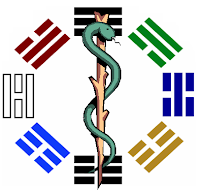Treating Allergies With Auricular Medicine: The Cat In The Ear
Abstract
A 60-year-old man reported allergies to cats for about 40 years. The patient relied on antihistamines and over-the-counter allergy medications to help with this problem. The clinician used a holistic treatment including auricular medicine to identify the organs and cause of the patient's condition. Needles were inserted at the projections of the bronchi and hypothalamus on the ear for 3 weeks. The problem was resolved and the patient discontinued his use of antiallergenic medications.
Keywords
Allergy, Auricular Medicine, Vascular Autonomic Signal (VAS), Filters, Nogier
Case Report
A 60-year-old man complained of allergic reactions that developed when he was around cats. This history of allergy dated back to his early 20s. Around cats, the patient developed a stuffy nose, chest tightness, and difficulty breathing. Typically, he took allergy medications (antihistamine) both prophylactically and therapeutically. Even with these precautions, he still developed severe symptoms and was unable to remain in the presence of cats for more than 2 hours.
Treatment
After giving consent for treatment, the patient was treated using auricular medicine techniques. The organs involved in the process of allergy were identified as the bronchi and the hypothalamus. Semi-permanent needles were inserted tangentially under the skin at the electrically active points within these zones. Two needles were inserted, 1 needle at each zone under sterile conditions, and left in place after being covered with sterile tape for a period of 3 weeks, and then removed.
Results
The patient subsequently visited his son who has a cat. He took antihistamine medications the night before the visit and on arrival at his son's home the next day. No symptoms developed. The patient discarded his medications and was able to stay 1 week around the cat with no reaction whatsoever.
Discussion
Auricular medicine was used to treat this patient. Using the filtering method explained later, the bronchi in phase 1 were identified as the site of pathology. Further filtering techniques suggested that the hypothalamus in phase 1 was responsible for initiating the process of allergic reaction, indicating a possible neurogenic etiology. Needles were inserted at the projections of these organs on the ear for 3 weeks. The needles appear to have corrected the pathology involving these organs.
In the 1950s, French neurologist Paul Nogier introduced a new acupuncture microsystem known as "auricular therapy."1,2 Later, his continued efforts and research resulted in the introduction of "auricular medicine." This system, an evolution of his original discovery, was made possible by the discovery of the vascular autonomic signal, a neurocardiovascular response perceived when the body is subjected to a stressor. The signal results in a transient change of the radial pulse qualities that could be perceived by palpating the radial artery at a specific point at the distal forearm area. Upon exposing the body to a stressor, the pulse is perceived to become fuller and stronger for a few seconds.
Another concept in auricular medicine is the electromagnetic field (EMF) of the ear. Under normal, healthy, non-stressful conditions, the EMF, or the "aura," of the ear extends laterally and perpendicularly from the external surface of the ear to a maximum distance of 1 cm. An EMF extending beyond 1 cm is indicative of energetic stress. As a microsystem, the projection of all the organs of the body can be identified on the ear; when an organ is stressed, its projection on the ear will reflect this stress by emitting excess energy. Consequently, any energetic disturbance of any organ will be reflected on the ear as a stressed EMF.
The vascular autonomic signal (VAS) can help guide the practitioner to pinpoint the exact organ responsible for such change in the EMF position. This can be accomplished by using filters, plastic containers with different kinds of stressors (organ tissues, medications, toxins, etc). As certain filters approach the ear, a transient change in the quality of pulse can be perceived at the radial artery once the filter comes in contact with the EMF of the ear. This response will determine the distance of the EMF boundary from the ear. In this case a filter containing cat dander was applied to the forearm of this patient. As the body perceived that as an exposure to the same allergen, the organs involved in the allergy process became energetically stressed. The stress also became evident on the ear. This was manifested by immediate expansion of the EMF of the ear beyond its resting position. While the clinician continues to palpate the pulse, the pointed end of a hammer-shaped plastic piece is used to scan the edge of the ear's EMF. Once this pointed end passes over the projection of the distressed organ, the energy emitted from that organ is reflected back to the source of emission. In effect, this will act as a stressor to the body, leading to a transient increase in the quality of the pulse. This way, the practitioner can identify the organ involved.
Conclusion
Auricular medicine offers a sophisticated system for providing invaluable information to help with diagnosis. It also offers a unique way to treat a wide variety of problems with amazing precision that is made possible by the vascular autonomic signal. As illustrated in this case report, a long-standing allergy was successfully treated in 1 session. Six months later, the patient reported no recurrence of his allergy to cats.
References
- Nogier PFM. From Auriculotherapy to Auriculomedicine. Maisonneuve, France: Moulins-Les Metz; 1983.
- Frank B, Soliman N. Atlas of Auricular Therapy and Auricular Medicine. Acupuncture Arts & Press; 2003.
